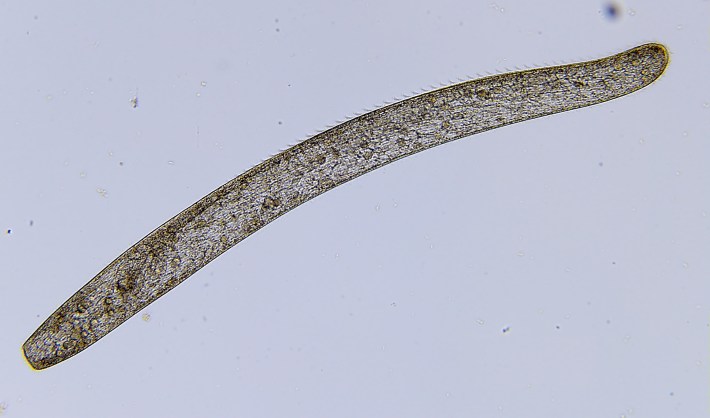A scientist following her nose around the black depths of a mine in Ontario back in 2009 discovered water—musty smelling, incredibly briny water—discharging from cracks in the rock nearly a mile and a half underground. This water, mass spectrometry has revealed, is approximately 1.6 billion—billion!—years old, making it the oldest water ever discovered by humans on our planet.
This water is almost inconceivably old. This water was already 1.3 billion years old by the time the first dinosaur showed up. The entire 65-million-year gap between the extinction of the dinosaurs and the emergence of humans represents about one twenty-fifth of the time this musty old water has existed down in the depths of the planet. This water is only a few million years younger—no time at all, compared to 1.6 billion years!—than the emergence of eukaryotic life on Earth. There were no green leafy plants when this water formed. There were no weird slimy salamander horrors slopping around in the primordial muck. There were not even mushrooms! Even frickin' trilobites were still a billion years in the future. There was just, like, this guy:

This ancient water, even after 1.6 billion years in a crack in a rock far beneath Ontario, had living things in it: "Tiny chemolithotrophic microbes ... feasting on hydrogen and sulfate," according to Maclean's. For Barbara Sherwood Lollar, the University of Toronto scientist who discovered the water, the discovery of this life, far outside of what's typically regarded as the habitable biosphere of Earth, has great potential implications for the search for life on other planets: If microbes can survive and persist in 1.6-billion-year-old water more than a mile beneath the surface of the earth, then perhaps they could do so under broadly similar conditions far beneath the surface of, say, Mars.
This is fascinating and maybe even profoundly universe-enlarging news! These hardy, minuscule survivalists have been doing piss and shit in a rivulet of ancient water deep underground for over a third of Earth's lifespan so far, untouched by sun and moon and wind, hidden from the sight of man and beast, insensate and unknowing, their furious peeing and pooping for all those silent aeons revealed only to the unblinking eye of God! Which raises the deepest and most profound questions facing sentient beings:
How much of this eldritch water is microbe peepee, and would you drink it?
Let me just state straight out that I would drink the musty and briny prehistoric microbe peepee water without hesitation. Bring forth a mighty goblet of this water and place it before me immediately, so that I may absorb its powers! I will chug that dang sucker like you wouldn't believe, buddy. To know that one's stomach and intestines and kidneys are wrestling with the mysterious chemistry of earth's dim past, to feel one's muscles and brain moistened and charged by the reeking whiz and dissolved doodoo of nameless subterranean prokaryotes unknown to light and air since countless millennia before the rise of the first vertebrates, to become, by pissing that crap forth into a modern toilet, the conduit for connecting the most distant ends of life's evolutionary peeing timeline ... this, my friends, is the enlightenment Dave Bowman knew at the end of 2001: A Space Odyssey, when he was a giant baby floating in space for whatever reason.
You may be thinking, "I would not drink the peepee," or "That sounds like a recipe for the diarrhea of Hell to me," or "Do chemolithotrophs even make urine? I kind of think they do not." You may even be thinking "How did this go from being a blog about a scientific discovery to one about whether to chug a goblet of prehistoric subterranean piss? I don't want to subscribe to this website anymore." But that is only vile fear warning you away from the frontiers of knowledge. That is why you will never possess the secrets of the ancient mine water! Frankly I don't think there was enough for both of us to have a glass anyway, so back the hell off.






